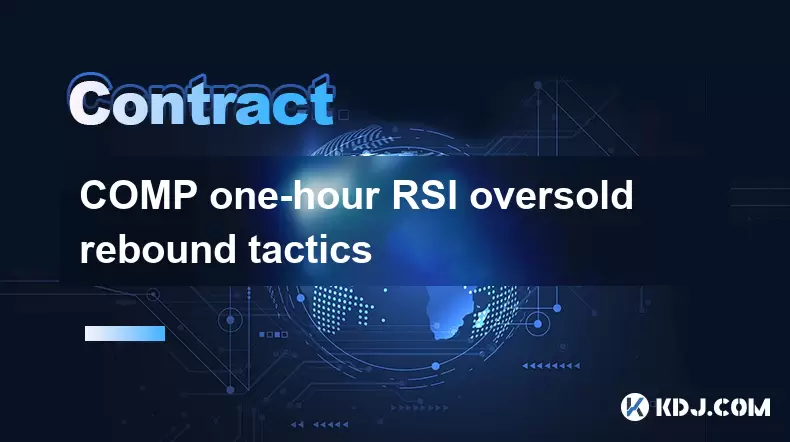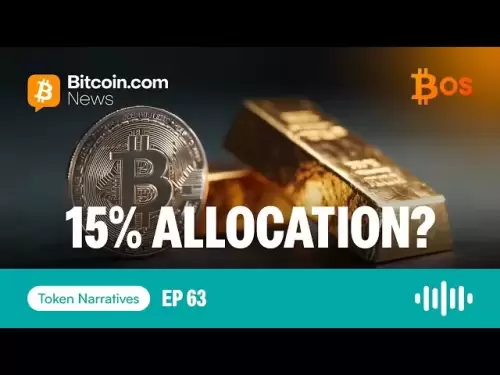-
 Bitcoin
Bitcoin $115200
-2.68% -
 Ethereum
Ethereum $3601
-5.16% -
 XRP
XRP $3.035
-2.96% -
 Tether USDt
Tether USDt $0.9997
-0.04% -
 BNB
BNB $764.5
-5.43% -
 Solana
Solana $168.1
-5.92% -
 USDC
USDC $0.9998
-0.02% -
 Dogecoin
Dogecoin $0.2090
-4.80% -
 TRON
TRON $0.3272
-0.49% -
 Cardano
Cardano $0.7306
-5.00% -
 Hyperliquid
Hyperliquid $39.16
-12.22% -
 Stellar
Stellar $0.3967
-4.96% -
 Sui
Sui $3.566
-5.95% -
 Chainlink
Chainlink $16.55
-6.57% -
 Bitcoin Cash
Bitcoin Cash $552.3
-3.90% -
 Hedera
Hedera $0.2516
-4.69% -
 Avalanche
Avalanche $21.99
-5.75% -
 Toncoin
Toncoin $3.621
-0.28% -
 Ethena USDe
Ethena USDe $1.000
-0.03% -
 UNUS SED LEO
UNUS SED LEO $8.951
0.02% -
 Litecoin
Litecoin $105.9
-3.59% -
 Shiba Inu
Shiba Inu $0.00001232
-5.00% -
 Polkadot
Polkadot $3.640
-5.55% -
 Uniswap
Uniswap $9.048
-7.03% -
 Monero
Monero $301.8
-1.51% -
 Dai
Dai $0.9999
-0.01% -
 Bitget Token
Bitget Token $4.334
-3.66% -
 Pepe
Pepe $0.00001064
-6.17% -
 Cronos
Cronos $0.1367
-5.78% -
 Aave
Aave $259.2
-4.59%
COMP one-hour RSI oversold rebound tactics
COMP, a DeFi token, may rebound when its RSI drops below 30 on a one-hour chart, signaling an oversold condition; traders can use this to buy at potential lows.
Jun 10, 2025 at 01:01 pm

Introduction to COMP and RSI
COMP, short for Compound, is a decentralized finance (DeFi) protocol that allows users to lend and borrow assets on the Ethereum blockchain. The native token of the platform, also called COMP, is used for governance and incentivizing users. One of the key technical indicators used by traders to analyze the market movement of COMP is the Relative Strength Index (RSI). RSI is a momentum oscillator that measures the speed and change of price movements, ranging from 0 to 100. An RSI below 30 indicates an oversold condition, suggesting that the asset may be due for a rebound.
Understanding RSI Oversold Conditions
When the RSI of COMP falls below 30, it suggests that the token has been subject to heavy selling pressure and may be poised for a potential price increase. This condition is particularly interesting for traders looking to capitalize on short-term rebounds. An RSI oversold condition does not guarantee a rebound, but it provides a signal that the asset may be undervalued and could present a buying opportunity.
Identifying RSI Oversold on a One-Hour Chart
To effectively use the RSI for trading COMP, traders need to monitor the one-hour chart closely. Here's how to identify an RSI oversold condition on a one-hour chart:
- Open a trading platform that supports COMP and has charting capabilities, such as Binance or Coinbase Pro.
- Select COMP/USDT or another trading pair involving COMP.
- Switch to the one-hour time frame on the chart.
- Add the RSI indicator to the chart. Most platforms allow you to do this by clicking on the indicators menu and selecting RSI.
- Set the RSI period to 14, which is the standard setting.
- Monitor the RSI value. When it drops below 30, COMP is considered oversold on the one-hour chart.
Tactics for Trading COMP RSI Oversold Rebounds
When the RSI indicates that COMP is oversold, traders can employ several tactics to attempt to profit from a potential rebound. Here are some strategies:
Buying at RSI Oversold Levels
- Wait for the RSI to drop below 30. This confirms the oversold condition.
- Place a buy order at the current market price or set a limit order just above the current price to ensure execution.
- Set a stop-loss order slightly below the recent low to manage risk.
- Monitor the price action. If COMP starts to rebound, consider taking partial profits at key resistance levels.
Using Candlestick Patterns
- Look for bullish reversal patterns such as hammer or doji candles when the RSI is oversold.
- Confirm the pattern with a subsequent bullish candle.
- Enter a long position after the confirmation candle closes.
- Set a stop-loss below the low of the reversal pattern.
Combining RSI with Other Indicators
- Use moving averages to identify the trend. If COMP is above a key moving average like the 50-period moving average on the one-hour chart, it may increase the likelihood of a successful rebound.
- Check volume. An increase in trading volume during the oversold period can indicate strong buying interest and support a potential rebound.
- Combine RSI with the MACD. If the MACD line crosses above the signal line while the RSI is oversold, it can be a strong signal for a potential upward move.
Risk Management and Position Sizing
When trading COMP based on RSI oversold conditions, risk management is crucial. Here are some tips:
- Determine your risk tolerance before entering any trade.
- Calculate the position size based on your risk tolerance and the distance to your stop-loss level.
- Never risk more than 1-2% of your trading capital on a single trade.
- Adjust your position size according to the volatility of COMP. Higher volatility may require smaller position sizes.
Monitoring and Adjusting Trades
After entering a trade based on an RSI oversold condition, continuous monitoring and potential adjustments are necessary:
- Watch the price action closely. If COMP fails to rebound and continues to drop, consider exiting the trade to minimize losses.
- Adjust stop-loss levels as the trade moves in your favor to lock in profits.
- Take partial profits at key resistance levels to secure gains while leaving some positions open for potential further upside.
Frequently Asked Questions
Q: Can the RSI be used effectively on other time frames for trading COMP?
A: Yes, the RSI can be used on various time frames for trading COMP. While the one-hour chart is suitable for short-term trading, longer time frames like the four-hour or daily chart can provide signals for medium to long-term trades. The key is to adjust the RSI period and other parameters according to the chosen time frame.
Q: How often should I check the RSI on the one-hour chart for COMP?
A: For active trading, checking the RSI on the one-hour chart every hour or at least every few hours is advisable. This allows you to stay updated on potential oversold conditions and act quickly on trading opportunities.
Q: Is it possible to use the RSI oversold condition for short selling COMP?
A: While the RSI oversold condition is typically used to identify potential buying opportunities, it can also be used to confirm a downtrend for short selling. If the RSI rebounds from oversold levels but fails to break above 50, it could indicate continued bearish momentum, suggesting a potential short-selling opportunity.
Q: What other indicators can be used in conjunction with RSI to enhance trading COMP?
A: Besides moving averages and MACD mentioned earlier, other indicators that can enhance trading COMP include the Bollinger Bands, Stochastic Oscillator, and the Average Directional Index (ADX). Each of these indicators can provide additional insights into market conditions and potential trading opportunities.
Disclaimer:info@kdj.com
The information provided is not trading advice. kdj.com does not assume any responsibility for any investments made based on the information provided in this article. Cryptocurrencies are highly volatile and it is highly recommended that you invest with caution after thorough research!
If you believe that the content used on this website infringes your copyright, please contact us immediately (info@kdj.com) and we will delete it promptly.
- Litecoin Price Watch: UNIL Pump & Staking Success Steal the Show?
- 2025-08-02 02:50:12
- Bitcoin, Crypto, Gambling Sites: 2025's Hottest Trends and Where to Bet
- 2025-08-02 02:50:12
- FTX Token's Wild Ride: FTT Drop Amidst Creditor Repayment Buzz
- 2025-08-02 01:30:12
- Navigating the Crypto Market: Bitcoin, Trader Experience, and Avoiding the Noise
- 2025-08-02 00:50:12
- Deep Agents, AI Task Management, and Evolution AI: A New Era?
- 2025-08-02 00:50:12
- AAVE Price Under Pressure: Technical Indicators Point to Bearish Momentum
- 2025-08-02 02:10:12
Related knowledge

Why is my Bitstamp futures position being liquidated?
Jul 23,2025 at 11:08am
Understanding Futures Liquidation on BitstampFutures trading on Bitstamp involves borrowing funds to open leveraged positions, which amplifies both po...

How to report Bitstamp futures for taxes?
Jul 30,2025 at 08:35am
Understanding Bitstamp Futures and Taxable EventsWhen trading Bitstamp futures, it’s essential to recognize that these financial instruments are treat...

Does Bitstamp offer inverse contracts?
Jul 23,2025 at 01:28pm
Understanding Inverse Contracts in Cryptocurrency TradingIn the realm of cryptocurrency derivatives, inverse contracts are a specific type of futures ...

What is the difference between futures and perpetuals on Bitstamp?
Jul 27,2025 at 05:08am
Understanding Futures Contracts on BitstampFutures contracts on Bitstamp are financial derivatives that allow traders to speculate on the future price...

How to find your Bitstamp futures trade history?
Jul 23,2025 at 08:07am
Understanding Bitstamp and Futures Trading AvailabilityAs of the current state of Bitstamp’s service offerings, it is critical to clarify that Bitstam...

Can I use a trailing stop on Bitstamp futures?
Jul 23,2025 at 01:42pm
Understanding Trailing Stops in Cryptocurrency TradingA trailing stop is a dynamic type of stop-loss order that adjusts automatically as the price of ...

Why is my Bitstamp futures position being liquidated?
Jul 23,2025 at 11:08am
Understanding Futures Liquidation on BitstampFutures trading on Bitstamp involves borrowing funds to open leveraged positions, which amplifies both po...

How to report Bitstamp futures for taxes?
Jul 30,2025 at 08:35am
Understanding Bitstamp Futures and Taxable EventsWhen trading Bitstamp futures, it’s essential to recognize that these financial instruments are treat...

Does Bitstamp offer inverse contracts?
Jul 23,2025 at 01:28pm
Understanding Inverse Contracts in Cryptocurrency TradingIn the realm of cryptocurrency derivatives, inverse contracts are a specific type of futures ...

What is the difference between futures and perpetuals on Bitstamp?
Jul 27,2025 at 05:08am
Understanding Futures Contracts on BitstampFutures contracts on Bitstamp are financial derivatives that allow traders to speculate on the future price...

How to find your Bitstamp futures trade history?
Jul 23,2025 at 08:07am
Understanding Bitstamp and Futures Trading AvailabilityAs of the current state of Bitstamp’s service offerings, it is critical to clarify that Bitstam...

Can I use a trailing stop on Bitstamp futures?
Jul 23,2025 at 01:42pm
Understanding Trailing Stops in Cryptocurrency TradingA trailing stop is a dynamic type of stop-loss order that adjusts automatically as the price of ...
See all articles

























































































